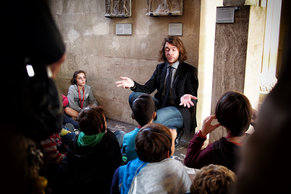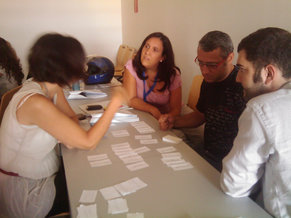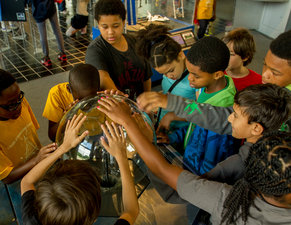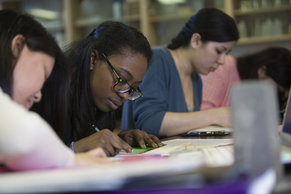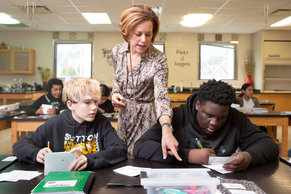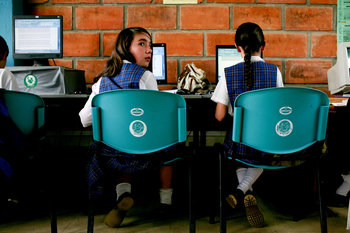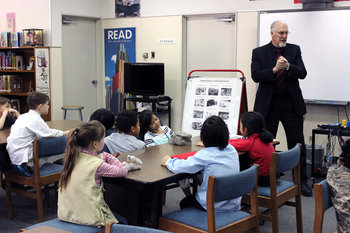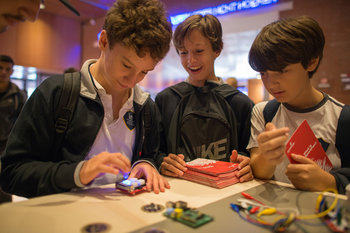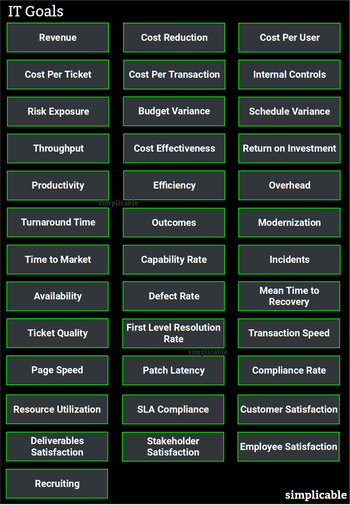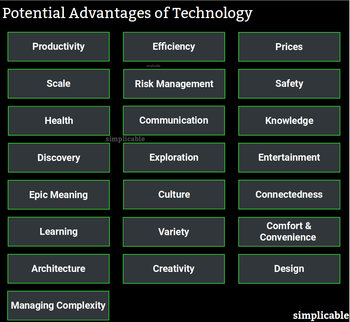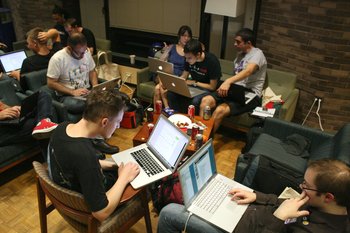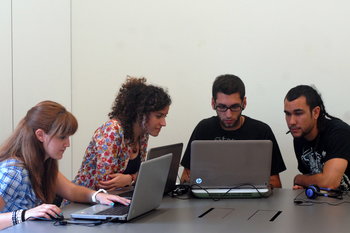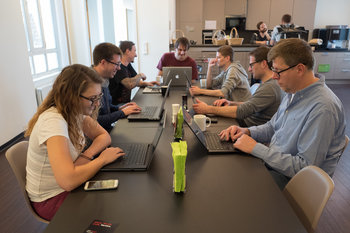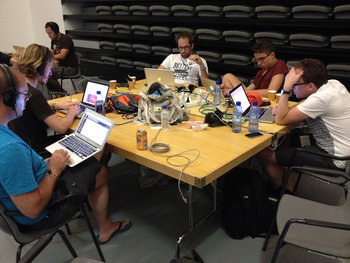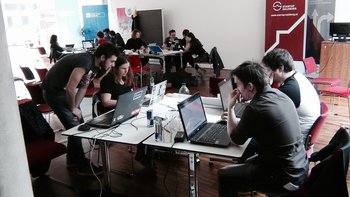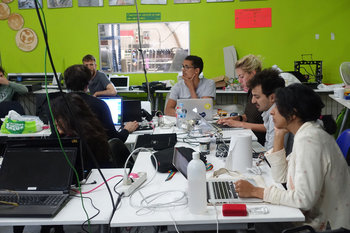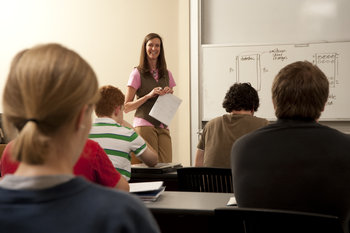Hardware
Schools may offer students access to basic hardware such as desktops and tablets.Operating System
Operating systems that are appropriate for a school environment offer security, controls, accessibility and terms of service that protect the privacy of students. Schools may also consider their capability to maintain, support and administer the selected operating system.Productivity Tools
Basic productivity tools such as word processing and spreadsheets.Internet
Safe access to the internet as a tool of research.Communication
Communication technologies such as an inexpensive video conferencing tool that allows a class to collaborate on a project with a partner school in a foreign country.Information Security
Information security is a primary consideration in the selection of any education technology. In some cases, technology is also specifically designed to improve security such as a firewall or encryption tool.Assistive Technology
Assistive, adaptive and rehabilitative devices for people with disabilities. For example, specialized equipment that helps people with disabilities to participate in physical education and sport.Rote Learning
Apps that drill concepts, terms, spelling or vocabulary for productive rote learning. For example, a flashcard app that a language teacher can easily populate with vocabulary for a unit.Educational Games
Education apps that use gamification techniques to increase engagement.Serious Games
Serious games are game-like interfaces that simulate real life. For example, a game where students manage a nature reserve to try to manage threats to an ecosystem.Empathy Training
Games and other digital tools that are designed to build empathy for the situation of others. For example, a serious game where a student plays the role of a teacher who must manage a class that is acting up.Simulations
Non-game simulations such as an app that allows chemistry students to perform virtual experiments without the hazards of real chemicals.Programming Environments
Commercial or educational programing languages and development environments. Some "programming" tools for children resemble simple configuration tools that are too disconnected from real coding to have much value. Students can generally use a commercial programming language from around age 10 if given proper support.Design Tools
Tools for designing things such as a computer aided design (CAD) platform that can be used to architect and design things such as buildings, infrastructure, vehicles, technology or products.Media Production
Media production equipment and software such as a digital camera or video editing platform.Creativity
Tools for creative processes such as visual art, animation and music production.Collaboration
Tools for collaboration such a messaging tool that allows teachers, parents and students to ask each other questions and share information at any time.Content Management
Content management platforms for publishing content such as articles, media and documents.Digital Content
Libraries of digital content such as a service that allows students to check out and read ebooks from a very large collection of titles that exceeds that of any physical library.Document Management
Platforms for capturing, preserving and sharing documents. This is a critical tool for school administration for managing documents such as accounting, attendance and policy artifacts. Document management can also be used as a tool of teaching such as a tool that allows a teacher to preserve their lesson plans, materials and tests for future reference.Classroom Aids
Technology that helps teachers to deliver a lesson or manage the classroom. For example, tools that allow a teacher to present media-rich presentation slides in class.Data Analysis
Tools for discovering patterns in data and visualizing data. For example, an analytics platform populated with real time operations data from a zoo that lets students investigate things such as the dietary requirements of animals.Courseware
Packages of content, media and functionality for a subject, program or course. For example, a mobile app that offers classroom and home assignments that augment a particular course.Blended Learning
A broad term for digital content and tools that complement classroom teaching. For example, an app that aligns to the curriculum of a class such that teachers can assign paperless classwork and homework.Learning Management System
Systems that offer everything that you need to deliver a class electronically such as the administration of attendance, tests, progress tracking and formative assessments. In some cases, these are massive systems that offer a variety of content.Online Course
A program or class that can be taken completely online. This may be a relatively lonely experience that fails to build cultural capital such as social skills. However, there are efforts to make this more of an interactive and social experience. Online courses have the potential to allow for democratic access to education such as a prestigious university that provides degrees to anyone with the talent to complete the requisite courses at low cost or no cost.Assessment
Formative and summative assessment tools such as a standardized test administered in an electronic format.School Administration Systems
Software that systematizes and partially automates school administration processes such as admissions and attendance.Digital Credentials
Digital degrees, badges, certificates and report cards. Nations may eventually emerge with standardized platforms in these areas. Any school that offers these services will have to consider complex questions of security, privacy, integration and access.Instruments
Instruments such as a digital microscope.Low Technology
Low technology is any technology that is far from the cutting edge such that it may be easy to use and inexpensive. For example, $8 digital cameras that allow every student in a class to compose photographs on a field trip without the distractions of smart phones.Diy Technology
Do-it-yourself technology is anything that students can create in the classroom as a project. For example, a programming class that begins with students assembling, installing and configuring their own inexpensive desktop computers.Sustainable Technology
Technologies that have a comparatively low environmental impact or that improve the resilience of a community. For example, students who construct a small greenhouse using the principles of passive design to experiment with companion plantings and other sustainable approaches to food production.Printers
Devices that create physical representations of digital entities such as a 3d or paper printer.Electronics
Kits for experimenting with electronics including elements such as circuit boards, motors and sensors.Robotics
Kits for building and developing code for robots.Virtual Reality
Game-like environments and simulations that feel real.Augmented Reality
Augmented reality is the integration of the real world and digital entities. For example, a teacher who pulls up a digital twin of a jet engine for a lesson on jet propulsion.Telepresence
Technologies that allow students to interact and feel that they are experiencing remote locations. For example, a robot that simulates your presence at a festival in Japan when you are sitting in a classroom in Texas.Immersive Experience
Immersive experience is any illusionary environment that surrounds you such that you feel that you are part of it. In future, classrooms may well be immersive such that media is experienced in an interactive and realistic way. For example, viewing simulations of dinosaurs that interact with you.Failures of Education Technology
Education technology commonly fails to add value in several ways:
Technology for the Sake of Technology
A classic failure of education technology is to adopt technologies that sound complex, interesting and trendy without any serious analysis of needs, risks and integration into your school culture. The goals of your school, program, class or lesson drive the adoption of technology. Shaping your programs to fit technology is the wrong way of thinking about it.
Information Security
Purchasing technology without understanding or managing information security risks. A large number of school systems and schools have experienced reputational and financial damage due to information security incidents. These incidents can erode trust and harm the privacy and safety of students.
Overcomplexity
Adopting complex technologies that you lack the capabilities to administer, manage, maintain, operate or use.
Training
As a general rule, teachers must become experts in any tools you adopt and may require extensive training as part of implementation.
Usability
Adopting clunky tools with poor usability, performance and stability such that they are unpleasant to use. This can severely damage the learning experience.
Over Engagement
Technology related learning practices that have students staring at screens all day as opposed to communicating, creating, composing, playing and moving. This can harm student health, social skills and intellectual capabilities.
| Overview: Education Technology | ||
Type | ||
Definition | Any software or hardware that is used to facilitate learning or the administration of schools. | |
Related Concepts | ||





